xDai Chain is the world’s first USD stable-blockchain. It is meant for fast, private, fixed fee payments. It uses a dual token model, with the stable-coin xDai for payments, and the STAKE token supporting POSDAO consensus. Constructed by POAnetwork, the POSDAO consensus mechanism is proof-of-stake consensus, implemented by a DAO. This project has 5 second block times. It can transact and execute smart contracts quickly, cheaply, for a price which can be pre-determined because the asset is stable. It can do 70 transactions per second, for just a fraction of a cent, per transaction. This makes it a very suitable mechanism for payments.
Dual Token Model with Multi-Chain Staking
XDai chain uses a dual token model. xDai is the stablecoin, and STAKE‘s value is set by the market. xDai‘s stability allows for cheap, pre-determined transaction fees. A stable-chain creates benefits like: stable balances and stable gas fees (making it more scalable). It also brings the massive liquidity provided by Dai’s $120 million dollar marketcap.

The STAKE token is volatile. It is used to secure the network, and to provide rewards to validators. xDai Chain offers 4 types of staking rewards.
The 4 different types of staking rewards include: transaction fees in xDai, STAKE rewards for validating blocks, bridge fees, and Chai interest fees from locked Dai.
Rewards are paid based on staking ratios. Rewards are given to validators, in STAKE tokens, and in xDai based off of transaction fees. STAKE tokens which are locked in the protocol, can currently earn a 15% (or more) Annual Percentage Rate making it very attractive to investors.
Currently, there is a 34% APR pre-staking period until August taking place on Bitmax.
- Multi-chain staking means the STAKE token can be used to secure and earn rewards for ANY side-chain under POSDAO. It can also be staked on other blockchains. STAKE’s value could grow, if many stable-chains were built under the DAO. Validators of these side-chains would need to secure them with STAKE.

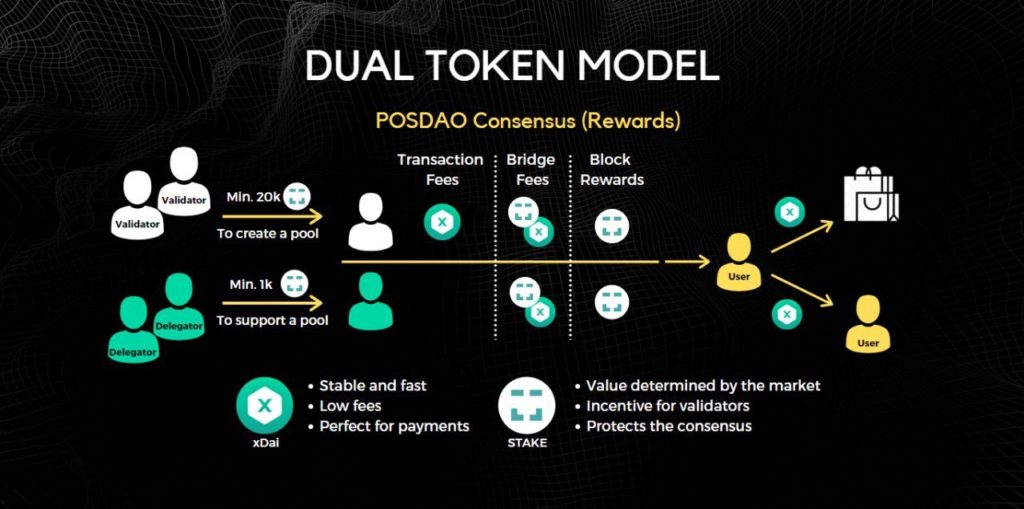
The POSDAO Consensus Mechanism
xDai Chain has just transitioned from Proof-of-Authority to the POSDAO consensus mechanism, which stands for Proof of Stake Decentralized Autonomous Organization. POSDAO can be used to generate and govern an unlimited amount of side-chains, for horizontal scaling. The DAO can be used to configure variables like: the number of validators, transaction fees, block rewards, bridge fees and even a dual token. This gives it on-chain upgradability. The consensus mechanism makes it cheap, scaleable, fast, and efficient.
Each side-chain running under POSDAO could potentially run a coin fixed to a different currency, like the EURO. It can run side-chains fixed to other fiat currencies, or cryptocurrencies. Different side-chains can be designed for different use cases.
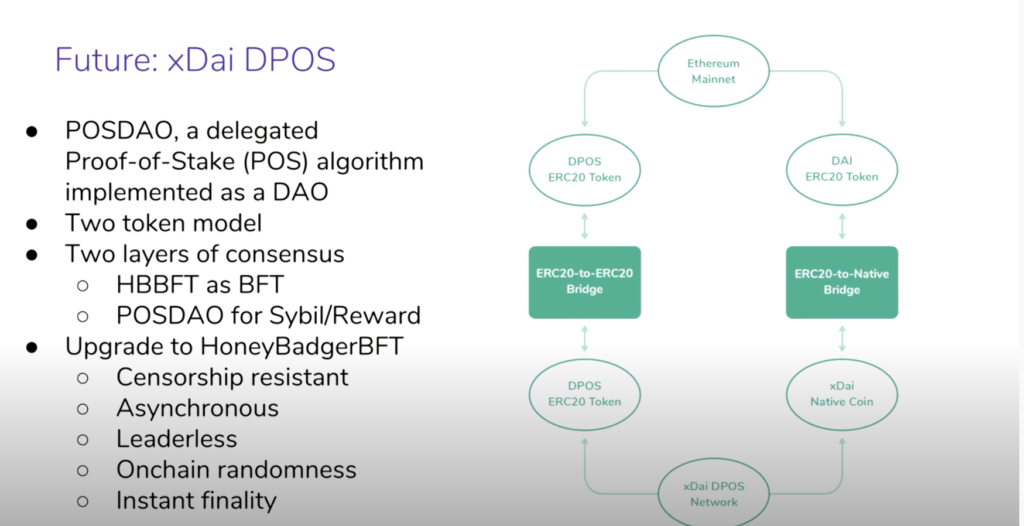
How the Token Bridge Earns the Dai Savings Rate (DSR)
Dai tokens are swapped into xDai, via the token bridge. This creates interoperability between the Ethereum Network, and xDai Chain. When Dai is locked in the bridge, it is converted into Chai. Chai receives the Dai Savings Rate (DSR). The fees earned from the DSR are distributed to stakers. This is one of the ways this project provides healthy incentives to validators of the bridge, as well as block producers.
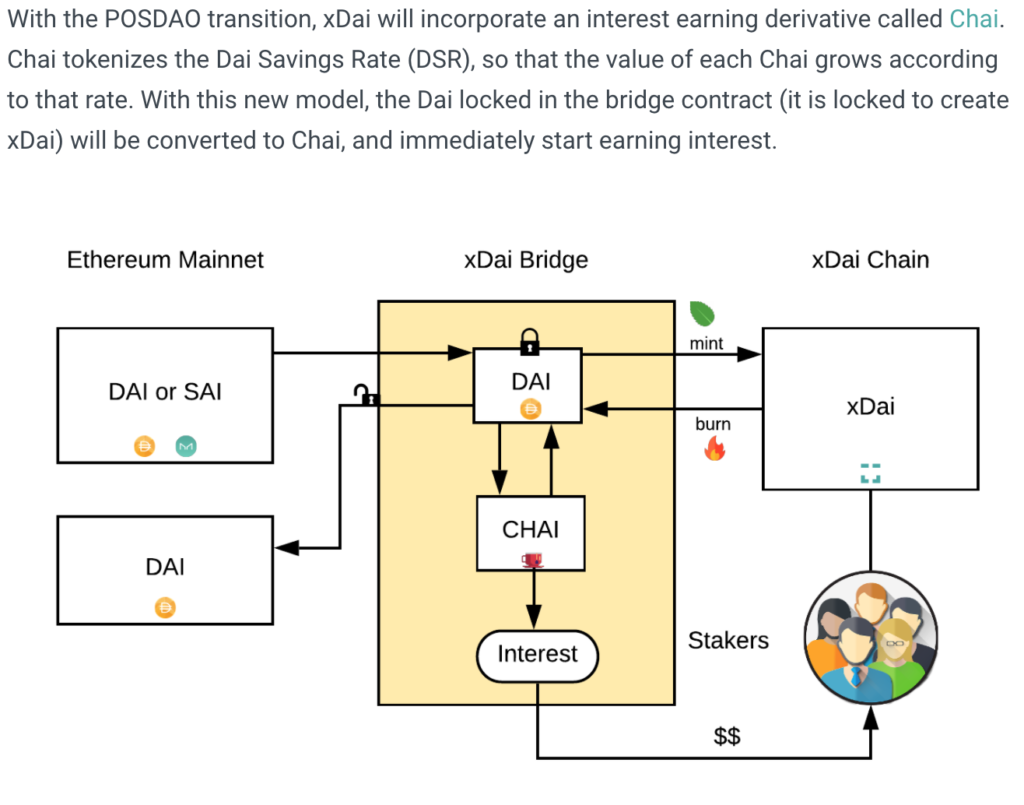
Stable Side-Chains Offer Scalability/Predictable Fees
2nd layer stable-chains have advantages. They include speed, predictable transaction costs, and network scalability, as the gas prices can be pre-determined. This is perfect for payments, as well as dApp usage. POSDAO consensus can manage unlimited stable-chains. Anyone running their own side-chain on the same protocol, will have their own group of DPOS validators. The validator set is managed by its own DAO, even allowing it to upgrade independently.
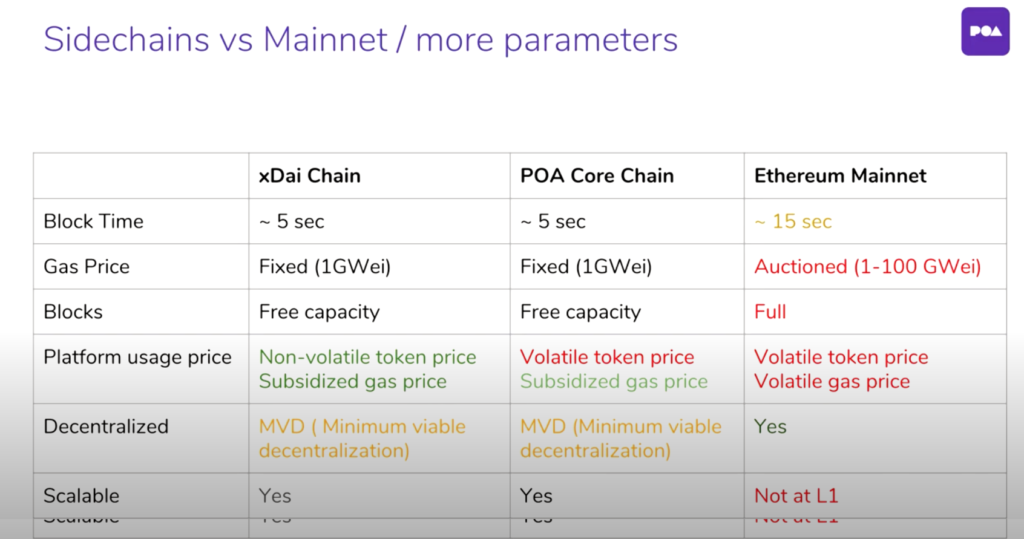
Who is POANetwork?

POANetwork is an autonomous network built on the Ethereum protocol, using Proof of Authority consensus. This means that validators have a public identity, with a vetting process to ensure good behavior. The POA network uses a limited number of independent, pre-selected validators. In addition to running a network, POA has created projects like: TokenBridge, Nifty Wallet, and a blockchain explorer called Blockscout.
The Burner Wallet and xDAI
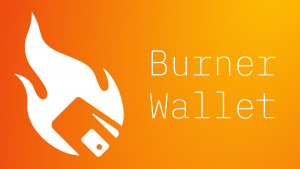
Burner wallet is a simple wallet to use with xDai. It can be directly accessed within the browser, NO downloading of an application is needed. Its private keys are stored in local storage. It is a quick, easy method to spend and receive xDai.
Here’s a medium article showing you how to host a burner wallet.
My Conclusion on xDai Chain
xDai Chain‘s POSDAO side-chains are a needed solution for scaling, privacy, and payments. It is usable now! Stable-chains can offer benefits like: predetermined gas prices, speed, and massive liquidity from Dai’s 180 million dollar marketcap. I like the idea of many stable side-chains fixed to individual fiat currencies like the Euro, Yuan, etc.
I also like the dual token eco-system, which rewards stakers with 4 separate reward mechanisms. Interest rewards from Chai, are icing on the cake 😉
But, it will be interesting see how Ethereum 2.0 will affect the project, as it will implement higher TPS and low gas fees on layer 1. In spite of this, I think stablechains serve a needed purpose. Many users might not be comfortable using volatile cryptos like ETH, and want a better payment solution than DAI. I often wonder how a massive ETH price spike would affect its fees and usability. Stable-chains will allow better scalability, providing options which users will appreciate.
xDai chain’s main value propositions include: privacy, lower gas fees, higher TPS, 15% APR staking, horizontal scaling to other stablecoins fixed to fiat currencies. It brings multiple benefits, with TPS being only one.
If you liked this article, please follow me @defipicks